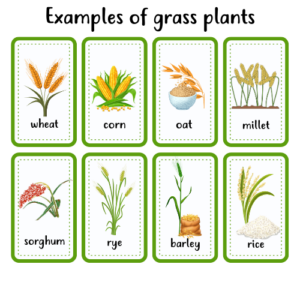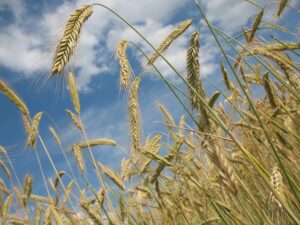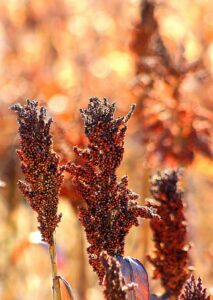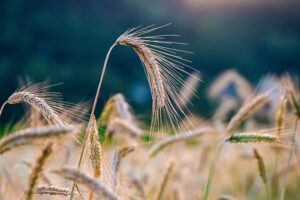The grasses, also known as poaceae, constitute a diverse group of herbaceous plants within the Poales order of monocotyledonous species. With over 800 genera and more than twelve thousand identified species, they exhibit a wide range of characteristics and applications.

Characteristics of Grass Plants
Table of Contents
Grasses are predominantly herbaceous, meaning they lack woody tissue. They can be either annual or perennial, characterized by cylindrical and hollow stems, ray ligulate leaves, and flowers possessing both male and female reproductive organs. These flowers cluster in formations known as spikelets, which aggregate into panicles or spikes. As they mature, they give rise to the familiar grain-bearing spikes.
While some grasses exhibit significant variations in size and shape, they share fundamental characteristics that distinguish them as members of the poaceae family. Despite the diversity, commonalities exist among iconic species like grass, wheat, and corn.
10 Examples of Grass Plants
1. Wheat
Wheat encompasses a group of cereals belonging to the grass family. It includes several cultivated and wild species primarily grown for human consumption, notably in bread production, or as feed for livestock.

2. Corn
Corn, native to the Americas, traces its origins to the region of Mexico. It is recognized for its tall stems, often exceeding three meters, which bear cobs containing the plant’s seeds. Various varieties produce grains ranging from a few millimeters to over one and a half centimeters.
3. Oats
Oats, another cereal within the grass family, are annual plants exceptionally rich in proteins, fats, vitamins, and minerals. This makes them valuable for both human and animal consumption, particularly in livestock nutrition.
4. Sorghum
Hailing from East Africa, sorghum is a resilient cereal with high drought tolerance. It finds cultivation in semi-arid regions, serving as a staple for human consumption and livestock feed.

5. Birdseed
Birdseed, a herbaceous plant of the poáceas group, originates from the Mediterranean area. While historically used for its edible flour, it is now primarily cultivated for various bird species as feed.
6. Millet
Millet encompasses a group of grasses cultivated in arid temperate, tropical, and subtropical regions. Varieties such as finger millet, pearl millet, and proso millet are essential in Asian and African countries for bread, traditional beverages, and livestock fodder.
7. Rye
Rye, another grass cereal, yields seeds for flour production, alcoholic beverages, and animal fodder.

8. Barley
Barley, with an annual life cycle, is a vital cereal for human and animal consumption, ranking fifth in global production. It belongs to the “winter” cereals, with harvests typically in May and June. Notably, barley can thrive in less fertile soils compared to other grasses like wheat. It is also a key ingredient in beer production.
9. Rice
Rice, a cereal native to Asia, is believed to have been first cultivated in southern China. With over 10,000 known varieties, it requires ample water and a warm climate for optimal growth. Certain varieties, like glutinous rice, are characterized by higher starch content in the seeds.
10. Pastures
Pastures refer to a diverse range of grasses, both wild and intentionally cultivated for livestock feed. Common species include Chewing Fescue, Colonial Bent Grass, Axonopus appinis Chase, Lolium Perenne, and Kentucky Blue. Some species and varieties are particularly valued for livestock production, while others, like Axonopus appinis Chase, serve ornamental purposes in gardens, streets, and parks, owing to their ground-covering growth pattern.